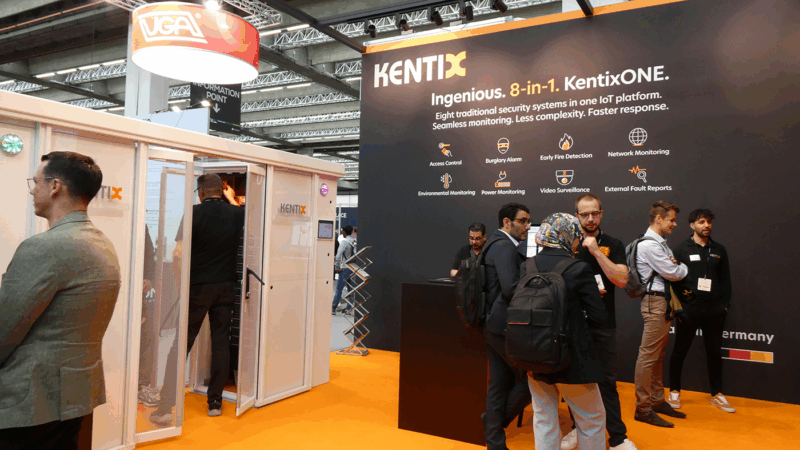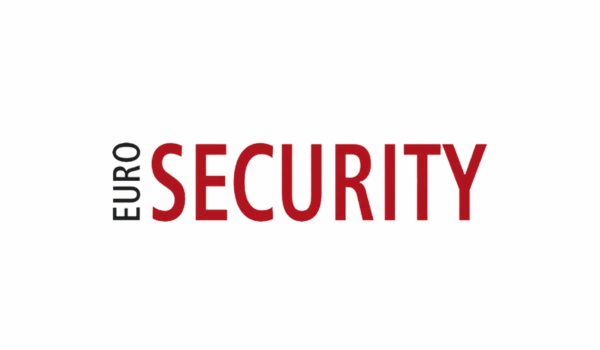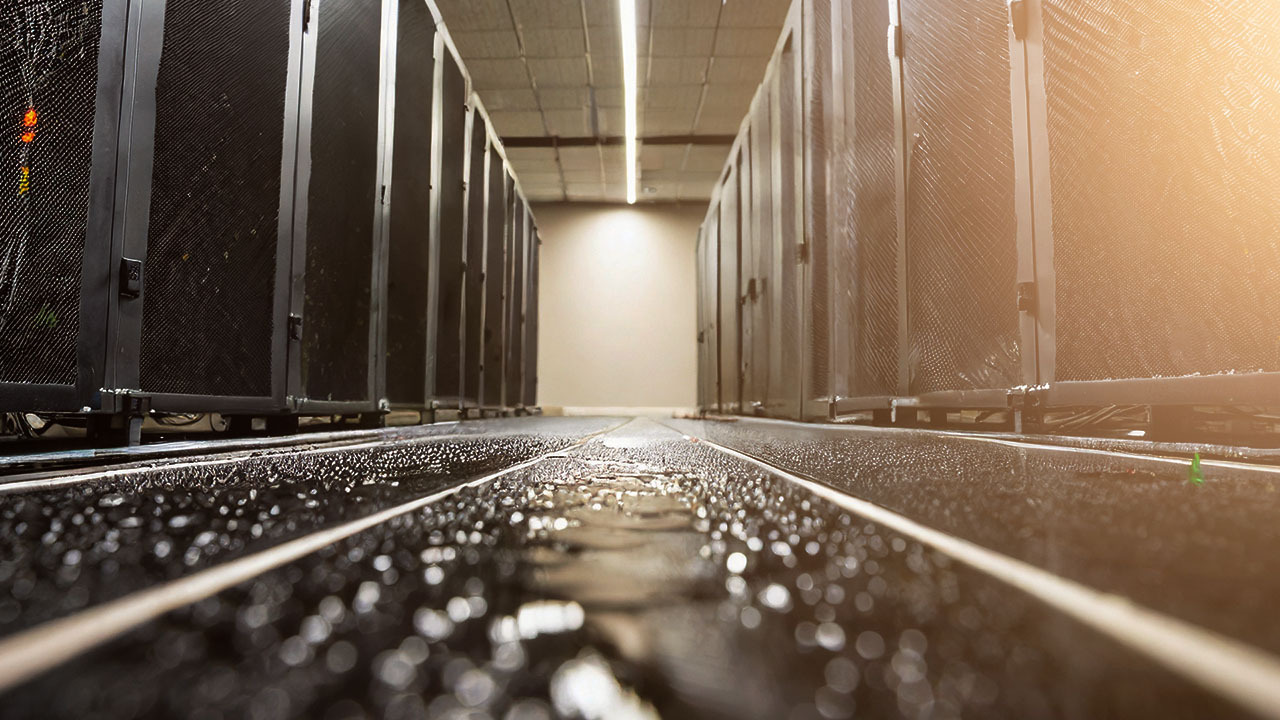Effective methods for preventing leaks in the data center
Data centers are of crucial importance for many companies, as they not only house sensitive data but also critical IT infrastructure. The smooth functioning of these facilities is therefore of the utmost importance. Water damage, which can lead to leaks, is a potential risk to the operation of a data center. These pose a serious threat to the integrity of your data and business continuity. How can water damage be prevented and the data center operated safely from leaks?
There are many causes of leaks and water damage
One of the most common causes of leaks in a data center is leaking pipes. They can lead to water damage that affects hardware and electronic devices in the data center. Regular inspections of the pipes help to detect and rectify leaks at an early stage. Monitoring systems should also be installed to detect leaks in real time and notify staff.
Defective air conditioning systems also pose a potential risk. If coolant or water leaks, servers and electrical devices are at risk. It is important to install backup cooling systems. This ensures continuous cooling even if the main air conditioning system fails.
Inadequate sealing, flooding or rainwater
Another potential hazard for a data center is poor roof waterproofing. Leaks in the roof can allow rainwater to penetrate the data center and cause damage. It is important to carry out regular inspections of the roof and to repair leaks promptly. In addition, monitoring systems can be installed that can detect water ingress.
Natural disasters such as flooding can also pose a major threat to a data center. Wherever possible, data centers should not be built in locations at risk of flooding. To protect against the effects of flooding, for example, flood protection walls can be installed or important equipment and servers can be housed on raised platforms.
It is crucial to identify potential risks in order to prevent water damage in a data center. A thorough risk assessment should be carried out to identify all potential hazards and take appropriate precautions. Regular inspections, maintenance and the use of monitoring systems can minimize these risks and ensure the security of the data center.
Implementation of water detection and monitoring systems
Water damage can mean considerable financial losses and production downtime for companies. Modern water detection systems and monitoring technologies provide early warning of water leaks and trigger alarms.
Water detection systems or leakage sensors use various sensors and detectors to recognize unusual moisture patterns. These systems can be installed near pipes, air conditioning systems and taps, for example. As soon as an unusual moisture value is detected, an alarm is triggered, allowing you to act quickly and minimize potential water damage. The Kentix leakage sensor detects water leaks at a very early stage, even in large rooms. It is suitable for use in server rooms, office kitchens or near machines, for example.
The implementation of a water detection system in the data center offers a number of advantages. Firstly, it allows you to detect water leaks at an early stage before serious damage occurs. This can help to avoid costly repairs and downtime. Water damage can also lead to data loss, which can be devastating for companies. A water detection system can limit the damage and prevent the loss of sensitive data.
Detect leaks and inefficient systems
Another advantage of implementing a water detection system is the ability to monitor and optimize water consumption. By monitoring water consumption, you can identify possible leaks or inefficient systems and take appropriate measures to reduce water consumption. This can not only save costs, but also contribute to a more sustainable business practice.
When implementing a water detection system, you should consider a few important points. Make sure that the sensors and detectors are installed in the right places to ensure early detection of leaks. Regular maintenance and inspection measures ensure that the system functions properly.
Regular inspection and maintenance
Regular inspection and maintenance are crucial for the smooth operation of a data center. It is important to check the infrastructure regularly in order to identify and rectify potential problems at an early stage. Regular inspections can detect leaks in pipes, problems with air conditioning systems or leaking roof seals in good time before they lead to major damage.
A good schedule for inspections and maintenance work ensures that potential problems can be identified and rectified at an early stage. It is advisable to have these tasks carried out by professionals who have the necessary know-how and experience.
Emergency plans and safety measures
Contingency plans and security measures are crucial to protect both employees and resources in an organization. Whether it’s natural disasters like flooding or man-made hazards like fire, being properly prepared can make the difference between things running smoothly and a disaster.
An important aspect of preparation is the development of clear emergency plans. These plans should contain detailed instructions on how employees should act in the event of an emergency. It is important that all employees are informed about these plans and receive regular training in them. This allows us to react quickly and effectively, which ensures the safety of everyone involved.
Clear rules help in an emergency
One example of such an emergency plan is dealing with water ingress. Companies in areas with a high risk of flooding should draw up clear rules for employees. Employees must be able to react correctly if water enters the premises. This may include turning off the electricity or leaving the building. By developing and communicating such plans, companies can minimize the potential damage caused by water ingress.
It is also important to invest in security measures, such as the use of security personnel, surveillance cameras, alarm systems and other technological solutions. These measures can help to identify and prevent potential hazards at an early stage. And they also give employees a sense of security and protection.
Both emergency plans and safety measures should be continuously reviewed and updated. Developing these plans once is not enough, as both the hazards and the working environment can change over time. Companies should conduct regular training and drills to ensure that all employees are familiar with the rules and can act correctly in an emergency.
Conclusion: preparation is the key
Leaks in the data center can have devastating effects on your company. Prevention should be the top priority. Identify risks, integrate monitoring systems (read more about the Kentix leakage sensor), carry out regular inspections and develop emergency plans. This allows you to protect your valuable data and ensure business continuity. Water damage is a thing of the past if you act proactively.








